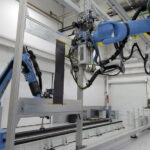Taiwanese carrier EVA Airways intends to buy up to 24 of the 787-10 Dreamliners that will be made exclusively at Boeing Co.’s North Charleston campus, the aerospace giant announced.
The airline also intends to buy a pair of 777-300ER airplanes from Boeing. The total value of the deal exceeds $8 billion at current list prices, although buyers typically negotiate discounts.
The announcement comes after Delta Air Lines CEO Richard Anderson warned analysts that there is a growing bubble in wide-body jets like the Dreamliner because a glut of leased aircraft will soon be coming back on the market. EVA Airways will be one of the first airlines in the world to introduce the newest and largest member of the 787 Dreamliner family, which is scheduled to debut in 2018. North Charleston will be the only place to make the plane because of its size.
“We look forward to welcoming EVA Airways as Boeing’s newest member of the 787-10 Dreamliner launch customer group,” Ray Conner, CEO of Boeing Commercial Airplanes, said in a statement. “EVA Airways has been a valued Boeing customer over the past few decades and we are honored that they continue to introduce new Boeing wide-body airplanes into their growing world-class fleet.”
The Dreamliners will be used to modernize EVA Airways’ long-haul fleet as the airline replaces aging aircraft. The 787-10s also will let the airline expand into new markets, particularly in Southeast Asia, Oceania and North America.
“This certainly shows confidence in Boeing South Carolina when a major blue-chip customers opts for the 787-10,” said Saj Ahmad, chief analyst for Strategic Aero Research. “Strategic campaign wins like this show that customers aren’t put off or short of financing options in the wake of the Ex-Im (Export-Import Bank) loss, and it also validates Boeing’s wide-body portfolio strength given that Airbus lacks a direct competitor to the 787-10.”
The 787-10 will be the third and longest member of the fuel-efficient 787 family, which is made of lightweight composite materials. The Dash 10 will have capacity for 330 passengers, a range of 6,430 nautical miles and will use 25 percent less fuel than the airplanes it replaces.











